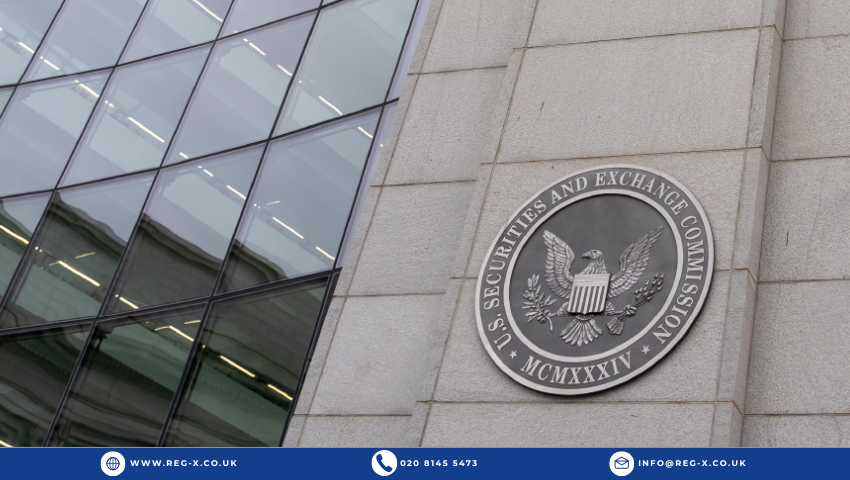Understanding SEC 10c 1a and Preparing for SLATE Reporting
The SEC 10c 1a rule introduces a significant change to the US securities lending landscape. Brought forward by the US Securities and Exchange Commission (SEC), this regulation aims to improve transparency and efficiency in the securities lending market.
Under SEC Rule 10c 1a, all lenders, broker-dealers, and intermediaries must report securities lending transactions to the Financial Industry Regulatory Authority (FINRA) using a standardised daily reporting format. Reporting will be conducted through FINRA’s Securities Lending and Transparency Engine (SLATE), an automated system designed to capture and share loan data.
This development closes long-standing information gaps in the US market and aligns domestic practices with international transparency regimes such as the European SFTR.
Why SEC 10c 1a Matters
Before SEC 10c 1a, the securities lending market operated with limited visibility. Lenders and borrowers often lacked access to consistent, comparable data, making it difficult to confirm whether loan terms reflected prevailing market conditions.
SEC 10c 1a changes that. It requires key details such as loan rates, collateral type, borrower classification, and transaction dates to be reported and, in part, made publicly available.
As SEC Chair Gary Gensler stated, “Securities lending played a role in the 2008 financial crisis… Transparency promotes competition and supports fair, orderly, and efficient markets.”
The objectives of SEC 10c 1a include:
- Increased transparency by revealing data on securities lending transactions
- Improved price discovery through visibility of loan rates and volumes
- Enhanced market efficiency via more informed trading and lending activity
- Stronger regulatory oversight through comprehensive reporting to FINRA
- Alignment with global standards such as SFTR, reflecting a worldwide shift towards transparency
SEC 10c 1a Implementation Timeline
Following the SEC’s temporary relief order in July 2025, the SEC 10c 1a compliance dates are as follows:
- September 28, 2026: Firms must begin reporting securities lending transactions to FINRA
- March 29, 2027: FINRA will begin publishing selected data for public access
These deadlines build on key milestones, including the SEC’s adoption of Rule 10c 1a in October 2023 and the release of SLATE technical specifications in 2024 and 2025.
Many firms are asking two key questions at this stage: Are we expecting any amendments from the SEC? and Will we still go live by September 2026?
While there is ongoing industry dialogue, the current implementation timeline remains unchanged, and firms are advised to continue their preparations towards the September 2026 reporting date.
How SEC 10c 1a Reporting Works
FINRA’s SLATE platform is central to the SEC 10c 1a reporting process. Covered persons—typically lenders, broker-dealers, and intermediaries—will submit data using fileX, FINRA’s secure transfer platform.
Each report must include essential details such as:
- Issuer name and ticker symbol
- Loan start and termination dates
- Borrower type and trading venue
- Loan rates, fees, and collateral percentages
Some confidential fields, such as the names of counterparties, will be reported to FINRA but excluded from public dissemination.
SEC 10c 1a vs SFTR
While SEC 10c 1a and SFTR (Securities Financing Transactions Regulation) share the goal of transparency, they differ in scope and complexity.
SEC 10c 1a focuses solely on securities lending within the United States, requires single-sided reporting, and includes 47 reportable fields—23 of which overlap with SFTR. In contrast, SFTR covers multiple products, applies across the European Economic Area, and includes dual-sided reporting with 91 fields for securities lending alone.
Despite being less complex, SEC 10c 1a is not a minor undertaking. Reporting is same-day (T+0), settlement-driven, and requires JSON-formatted submissions. Firms must accurately map, validate, and monitor large volumes of data daily.
If SFTR is rated a 9 out of 10 in difficulty, SEC 10c 1a might be a 7 for experienced firms—or an 8 for those new to regulatory reporting.
Where Reg-X Stands on Building the 10c 1a Solution
At Reg-X, development of our 10c 1a solution is well underway. Building on our proven middleware, which already supports EMIR, MiFIR, and SFTR, we are extending our existing data mapping and validation capabilities to fully support SEC 10c 1a compliance.
A question we often receive is, Where is Reg-X in terms of building the 10c 1a solution?
Our response is simple: the foundation is already in place. Our architecture is designed to handle the field mapping, validation, and enrichment required for 10c 1a reporting.
We are also asked, Has Reg-X established connectivity with FINRA to submit 10c 1a reports?
We are working closely with FINRA and industry partners to ensure secure, tested connectivity with the SLATE environment, ready for industry-wide testing phases before live reporting.
How Reg-X Can Help with SEC 10c 1a
Reg-X can help your firm to:
- Understand the scope of SEC 10c 1a and prepare for SLATE onboarding
- Assess and map internal data to identify reporting gaps and quality issues
- Integrate reporting workflows seamlessly with existing systems
- Automate data validation and control to ensure accuracy and consistency
- Test submissions with FINRA before live reporting begin
Our clients benefit from shared regulatory intelligence and a robust compliance framework that evolves as new requirements emerge. With Reg-X, your reporting processes remain accurate, efficient, and fully aligned with regulatory expectations.
In Conclusion
SEC 10c 1a has been described as an “SFTR light” regime, but it will still demand significant effort. The move to daily, same-day reporting and the need for consistent, high-quality data will challenge firms that have yet to modernise their reporting systems.
Early preparation is essential. Firms that begin assessing their data, systems, and governance now will be better positioned to comply and to minimise operational risk.
Reg-X are ready for SEC 10c 1a. Are you?




